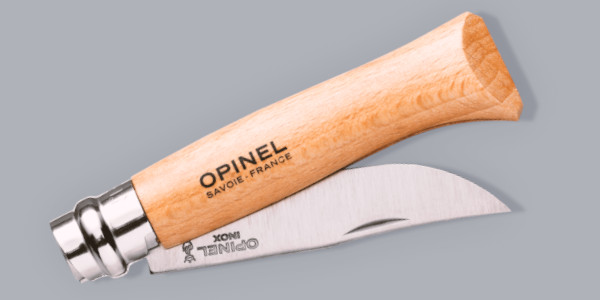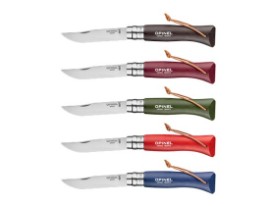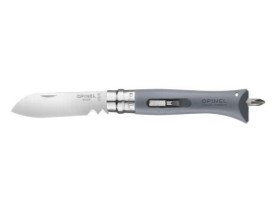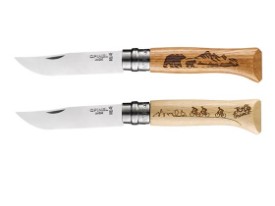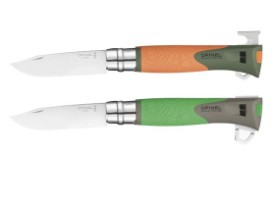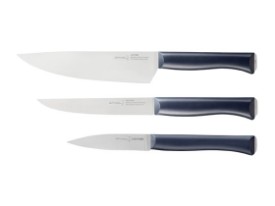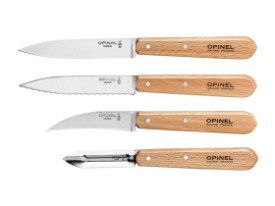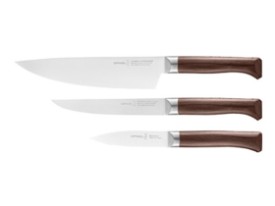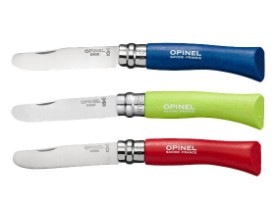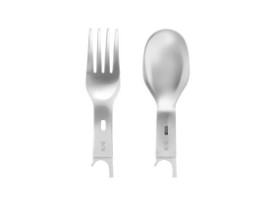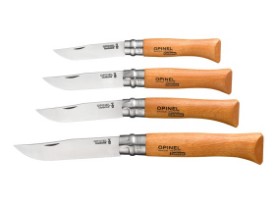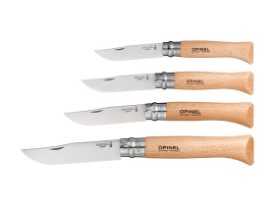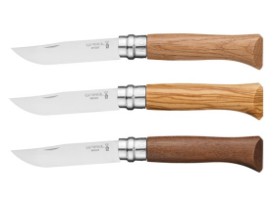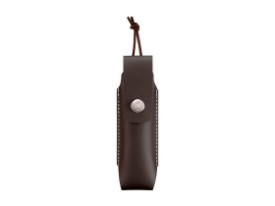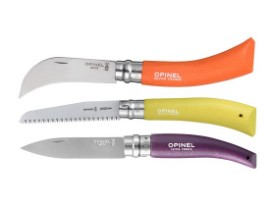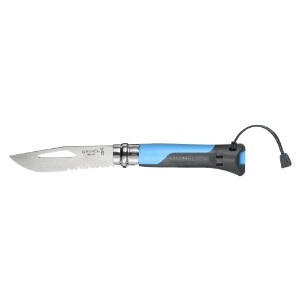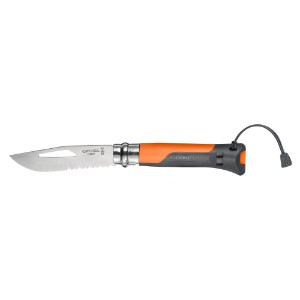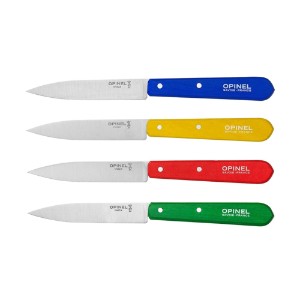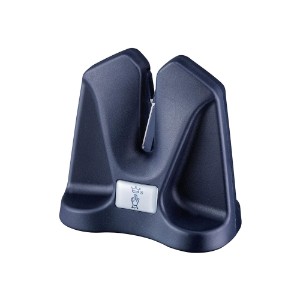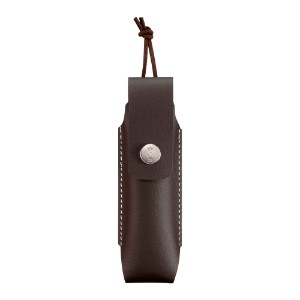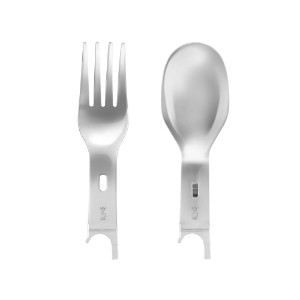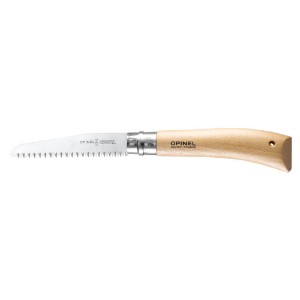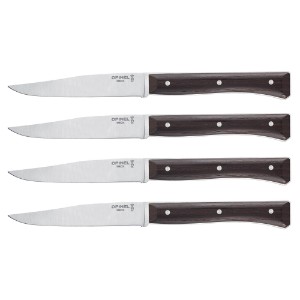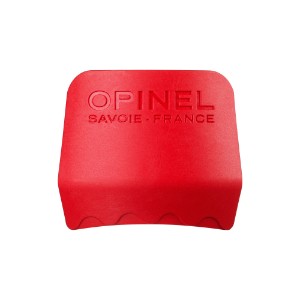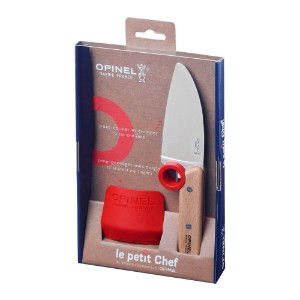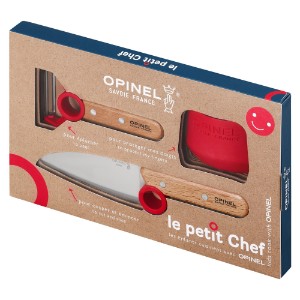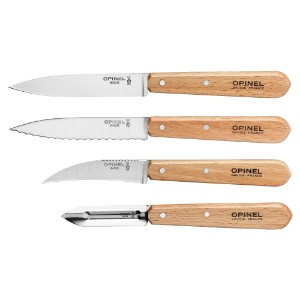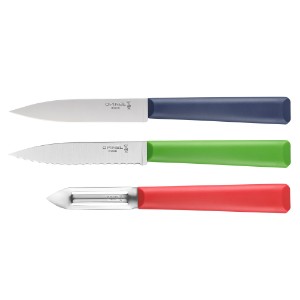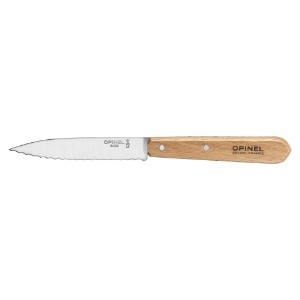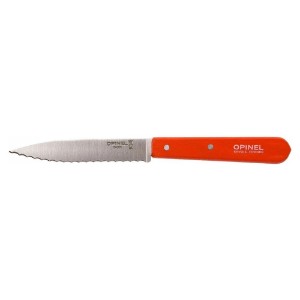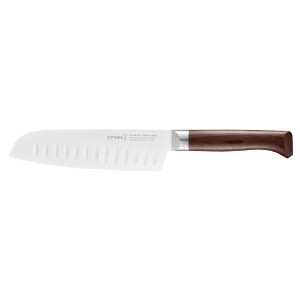The legendary Opinel brand, more than 130 years old and now part of French cultural heritage, originated in a small village in the Maurienne region of Savoie, France.
Joseph Opinel invented the pocket knife that bears his name, in 1890, at the age of 18. Today, some of the products are still made close to where they were designed, in the factory in Chambéry, Savoie.
In 1909, following the tradition imposed by Charles IX in 1565, who ordered that each master knife maker put an emblem on his products to guarantee their origin and quality, Joseph Opinel chose the Crowned Hand as his emblem. The hand of blessing is that of Saint Jean-Baptiste which appears on the coat of arms of Saint-Jean-de-Maurienne, the town closest to Albiez-le-Vieux, cradle of the Opinel family, and the crown as a reminder that Savoie was a duchy. Since then, all Opinel knife blades and tools have been printed with La Main Couronnée.
In 1989 the brand was mentioned in the Larousse dictionary, as a registered name and with the following current definition: knife with closing with wooden handle bearing a groove in which the blade is housed in the closed position.
Following its popularity, Joseph Opinel developed in 1897 a series of knives of twelve sizes, numbered from No. 01 to No. 12.

Blade
Choosing the steel contents is always a compromise between mechanical strength and corrosion resistance. 12C27MOD stainless steel is developed and finished in Sweden by the SANDVIK group, world-renowned in the cutlery world. The carbon and chromium content is in the order of 0.5 and 14.5% respectively.
The target hardness of Opinel blades is between 57 and 59 HRc.
This quality gives the blade high abrasion (wear) resistance, allowing it to withstand regular contact with hard materials, such as ceramic, before requiring resharpening.
The rounded profile of the OPINEL blade provides high cutting resistance compared to a flat blade of the same height and thickness on the back. Contact between the sides of the blade and the material being cut is minimised, which helps reduce friction and therefore cutting force. The OPINEL sharpening angle is approximately 40°.
Ring
The system contains a fixed ring, necessary to securely rivet the blade to the handle, a rivet and a rotating ring.
In 1955, eager to improve knife safety, Marcel Opinel invented the Virobloc® system.
This involves adding a rotating ring which, by sliding on the fixed ring, can close the slot and thus lock the blade open.
Forty-five years after its invention, in 1990, the Virobloc® system was modified to allow the blade to be locked in the closed position.
Cut from stainless steel, the Virobloc has two sections, a fixed and a sliding section. In addition to locking the blade in the open position (safety in use), it is now possible to lock the blade when it is closed (safety in transport).
Originally reserved for a few references, it was generalised in 2000 to all folding knife models starting with the N°06 model.
Handle
The shape of the traditional Opinel handle has remained unchanged since its design by Joseph OPINEL in 1890. The wooden handles of the folding knives have a large slot.
Only strong wood is suitable for shaping and can withstand use. That's why beech wood is mostly used. Some ranges use more noble types of wood such as olive tree, oak, walnut, boxwood, etc.
OPINEL avoids negative environmental impac, so favours local sourcing from sustainably managed forests. The wood shavings from shaping the handles have always been burned to heat the workshops. Even today, to heat the factory, the chips are burned in a combi-boiler which saves around 200,000 litres of fuel a year. To protect the handles from external aggressions, two finishes are applied: sanding and varnish.
Manufacturing of the N°1 and N°11 knives was stopped around 1935. Today the smallest Opinel is N° 2.
The sizes of the Tradition Inox knife range are:
- N°02: 3.5 cm blade with 4.5 cm handle, without safety ring
- N°03: 4 cm blade with 5.5 cm handle, without safety ring
- N°04: 5 cm blade with 6.5 cm handle, without safety ring
- N°05: 6 cm blade with 8 cm handle, without safety ring
- N°06: 7 cm blade with 9.5 cm handle, with Virobloc® system
- N°07: 8 cm blade with 10 cm handle, with Virobloc® system
- N°08: 8.5 cm blade with 11 cm handle, with Virobloc® system
- N°09: 9 cm blade with 12 cm handle, with Virobloc® system
- N°10: 10 cm blade with 13 cm handle, with Virobloc® system
- N°12: 12 cm blade with 16 cm handle, with Virobloc® system


